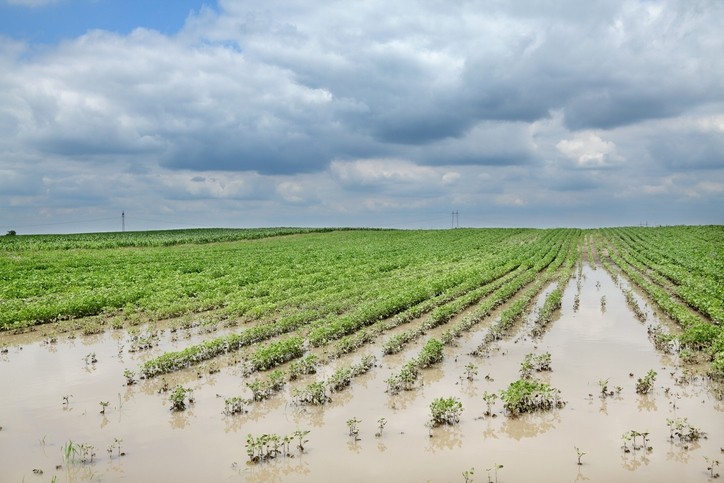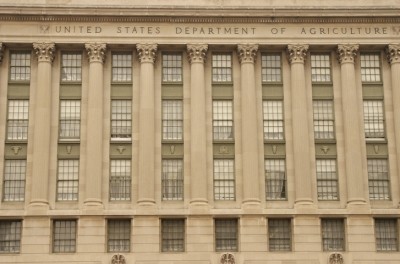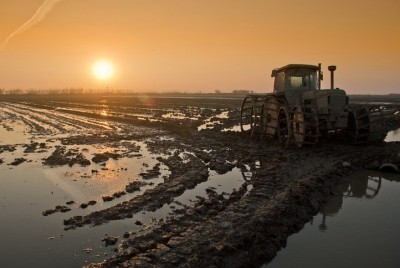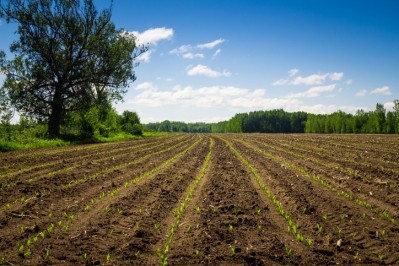USDA: Weather challenges slow feed crop planting in US

The US Department of Agriculture has just released details regarding the progress of feed crop planting and development through to April 28 in an updated crop progress report.
Feed crop producers in several states have seen challenges from recent weather conditions, including snow.
Producers in some states, including Illinois, have seen higher than average precipitation since December 2018, said Brian Kerschner, State Water Survey and spokesperson for the Illinois State Climatologist office.
April, May and June tend to be the wettest months for Illinois he told us. Feed crop producers may not be in store for drier periods in the near term as current weather patterns are expected to increase river levels and bring more precipitation.
More rain is anticipated throughout the week as two weather systems converge dumping more rain in the region, he said. “This is continuing to favor wetter than average conditions statewide."
“The whole state is dealing with excess soil moisture and conditions this week won’t help,” he said.
Additional precipitation could continue to delay field work as on average about 27% of US cropland acres have surplus topsoil moisture, the USDA said.
Corn planting and progress
Corn planting progress is keeping pace with last year’s planting rate, but behind where the crop usually is at this point in the 18 states responsible for 92% of the US corn acreage, the USDA said.
On average about 27% of the crop has been planted by April 28, the department said. This year, and last year, only about 15% of the crop has gone in the ground.
Two states – Texas and North Carolina – have managed to plant at least half of their crop, the department said. South Dakota has yet to see corn planting start.
Across Iowa, Illinois and Indiana – three states known for their feed crop production – planting has reached 21%, 9% and 2%, respectively, the department said. On average those states would see 26%, 43% and 17% of the crop in the ground at this point.
Following the pattern from planting, corn crop development also is behind where it is on average, the department said. Typically, about 5% of the crop has emerged at this point and year only about 3% of the crop has sprouted.
The feed crop in Texas has seen the most progress with about 55% of the corn emerged, the department said. However, 12 states have yet to see sprouts.
Soybean planting
Overall, the pace of planting for soybeans in the 18 states responsible for the majority of the crop trails both the rate set last year and the average pace, the USDA said. On average, about 6% of the crop has been planted by this point, last year 5% was and this year 3% is the ground.
Louisiana has made the most progress in planting with about 24% of its crop planted, the department said. However, Indiana, Minnesota, North Dakota, South Dakota and Wisconsin have yet to start planting the feed crop.
Eight states also are behind both where they were last year and the average planting place while Kentucky, Michigan and North Carolina have outpaced the average rate of planting in their states, the department said.
Wheat development and planting
Although already planted, conditions appear to be slowing the development of the winter wheat crop, about 19% of this year’s crop has headed – down from an average of 29% having reached that stage by this point in the year, said the USDA.
States that are lagging behind the crop development pace set from 2014 through 2018 include, California, Colorado, Idaho, Illinois, Indiana, Kansas, Missouri, North Carolina, Ohio, Oklahoma, Oregon, Texas and Washington, the department said. The only state that has increased development is Arkansas.
However, crop condition is higher than it was at this point last year, the department said. Last year at this point about 33% for the crop had earned a good or excellent rating and this year about 64% of the crop has that score.
In the six states responsible for the majority of the spring wheat crop all are lagging behind the average pace of planting, the department said. On average about a third of the crop has been planted by this point, and this year about 13% has been.
Production of barley, oats and sorghum
Barley planting is ahead of the pace set last year but remains behind average, the USDA said.
Typically, about 41% of the crop has been planted, but this point and this year about 28% is in the ground, the department said. Both Minnesota and Washington also are seeing the rate of planting fall behind where they were at this point last year.
Similarly, oat progress trails the average planting schedule but is an improvement on last year, the department said. At this point last year about 38% of the crop had been planted and this year 43% has been – although the average amount of planting completed by the end of April is 61%.
In the six states responsible for the majority of the sorghum crop, the rate of planting has dropped behind both the average and where the crop was at this point last year, the USDA said.
On average about 25% of the crop has been planted by this point, last year about 26% was in the ground and this year about 20% has been planted, the department said. Three states – Colorado, Kansas and South Dakota have yet to start planting.













